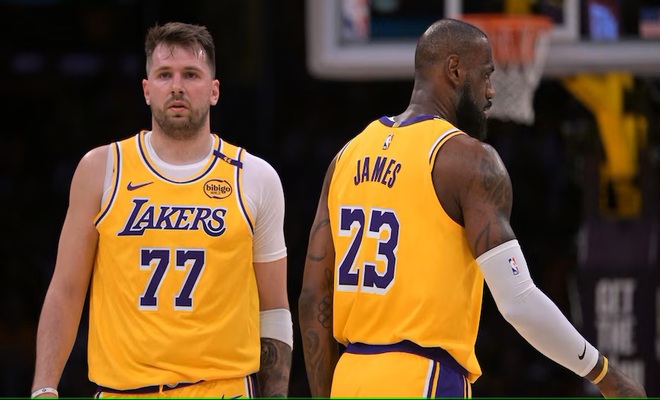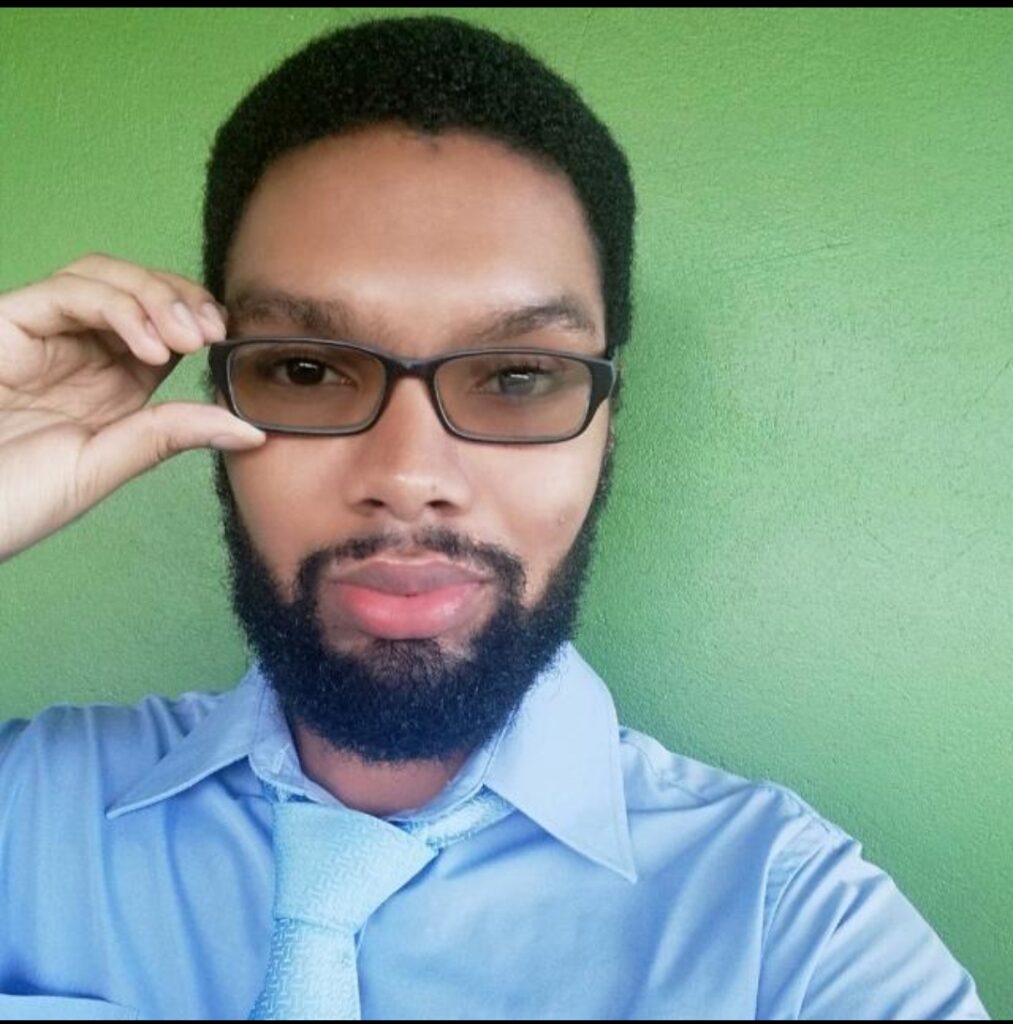-
 June 15, 2025, 2:57 pm
June 15, 2025, 2:57 pmLast Updated on August 19, 2025 7:36 pm by André Lemos | Published: June 15, 2025
The Lakers had a weird offseason that included a failed pursuit of UConn head coach Dan Hurley and the eventual, slightly controversial, hiring of LeBron James’ “Mind the Game” podcast partner, JJ Redick. That was followed up by the franchise controversially taking James’ son, Bronny James, with the No. 55 pick in the draft and the failed pursuit of Klay Thompson and center depth in free agency.
The regular season got even weirder as the Lakers somehow traded for Luka Doncic and rescinded their trade for Mark Williams after the trade deadline.
Yes, this is all real.
How’d It Go?
The Lakers truly got going in the second half of the season. It started before Luka Doncic got there, as they finally traded D’Angelo Russell for a 3-and-D player like Dorian Finney-Smith and the return of Jarred Vanderbilt from injury alongside some adjusted defensive strategies really reinvigorated the group.
The Lakers have the number one defensive rating (107.5) over the past 15 games ⚡️ pic.twitter.com/CAS2gfmhil
— Los Angeles Lakers (@Lakers) February 22, 2025
In the wee hours of the morning on February 2 (ET), Shams Charania shook the world with the news of the Doncic trade to the Lakers. The full details were that the Lakers received Doncic, Maxi Kleber and Markieff Morris, while the Mavs got Anthony Davis, Max Christie and a 2029 first-round pick.
Again in those early morning hours after midnight (ET) on February 6, the Lakers traded Dalton Knecht, Cam Reddish, an unprotected 2031 first-round pick and a 2030 first-round pick swap to the Hornets for Mark Williams, seemingly acquiring the big man of the present and future to play alongside Doncic. However, Williams failed his medical and the deal was rescinded on February 8 after the trade deadline. So, the Lakers were left without a starting-caliber center.
They secured the No. 3 seed but then lost in five games to the Wolves in the first round. However, they now have their franchise player of the present and future for the post-LeBron James era, whenever he decides to hang it up.
Coaching
JJ Redick completed his transition from podcaster, game commentator and TV analyst to head coach of the Los Angeles Lakers. Under his guidance, the Lakers had a 115.0 offensive rating (11th), a 113.8 defensive rating (17th) and a net rating of 1.2 (14th). Their pace of 98.34 was 20th.
The team had an okay start under him with some ups and downs, but in January, Redick finally found an effective defensive scheme that pretty much took “ignoring bad shooters” to the extreme to provide early help. We also saw him successfully employ the strategy of fronting Nikola Jokic with back-side help, which is something the Thunder adopted in Game 7 against the Nuggets with Alex Caruso fully or three-quarter fronting Jokic. The Lakers had the No. 1 defense in the league for a few weeks but it did not last as the shooting luck that was swinging their way with those defensive strategies began to normalize, plus the Lakers don’t exactly have all of the best defensive pieces either. After the All-Star Break, the Lakers had a 115.7 offensive rating (17th), a 113.6 defensive rating (17th) and a net rating of 2.1 (15th) with a pace of 97.86 (22nd) across a 30-game sample.
Before Luka Doncic’s Lakers debut on February 10, the team held a 31-19 record and was the No. 5 seed in the West behind the Thunder, Grizzlies, Nuggets and Rockets. I think it is important to note a few things since sports fans and media can have short-term memory. When Doncic arrived, the overwhelming narrative was that the Lakers did not have a functional enough roster to win games and would plummet down the standings. That narrative was flawed anyway, considering the offensive firepower available, but whether you want to credit Redick or not, this team exceeded and gained expectations throughout the rest of the season.
They went 19-13 from Doncic’s debut to the end of the regular season with a final record of 50-32 and the No. 3 seed. The first-round loss to the Wolves in five games was disappointing since the Lakers were the favorite and some even had them as a potential Conference Finals threat. Again, they gained those expectations under Redick’s care. Redick made some aggressive decisions like barely utilizing a big throughout the Wolves series, not making a substitute across the entirety of the second half in Game 4, and defensive schemes that loaded up on Anthony Edwards but left shooters wide open. As for Jaxson Hayes and the other bigs, it is clear that none of them were starting-caliber centers and that was one of the issues brought up about the roster’s functionality after acquiring Doncic and rescinding the Mark Williams deal. The second-half stubbornness in Game 4 also caused the players to tire and capitulate at the end, but perhaps that is easier to criticize in hindsight because if it worked, it would have been the “correct” choice. As for the defensive schemes, loading up in gaps on Edwards has been an effective strategy, but the Lakers just were not good enough at rotating or closing out to shooters. So, despite not always being the best decision-maker, Edwards was easily able to pick them apart.
In its entirety, it was a promising season for Redick as a rookie head coach, and he clearly has the passion, commitment, and depth of basketball knowledge to be a good coach. However, as should be expected, he will have to grow in his ability to manage games and personalities on his roster. That includes continuing to amplify their strengths and cover their weaknesses, perhaps with a little more patience than he has shown at times. Some of the issues were roster-related, and some of it was the natural process of learning on the job, but the positives should not be ignored.
All that said, let us end this on a funny note:
Just ran into @jj_redick at the Car Wash. he had the Laptop watching film!!!! Players coach!!! Lakers in great hands !! #dedication
— Baron Davis (@BaronDavis) October 26, 2024
The Players
Luka DončićPG, Los Angeles LakersSeason Team GP GS MPG FGM FGA FG% FTM FTA FT% 3PTM 3PTA 3PT% PTS REB AST STL BLK TO 24-25 LAL 50 50 35.4 9.2 20.5 45.0 6.2 7.9 78.2 3.5 9.6 36.8 28.2 8.2 7.7 1.8 0.4 3.6 23-24 DAL 70 70 37.5 11.5 23.6 48.7 6.8 8.7 78.6 4.1 10.6 38.2 33.9 9.2 9.8 1.4 0.5 4.0 22-23 DAL 66 66 36.2 10.9 22.0 49.6 7.8 10.5 74.2 2.8 8.2 34.2 32.4 8.6 8.0 1.4 0.5 3.6 ADP: 3.7/2.9 (Yahoo/ESPN) | Total Value: 51/61 (8/9-cat) | Per-Game Value: 4/7 (8/9-cat)
Doncic suited up in 28 games as a Laker, producing No. 9/No. 13 (8-cat/9-cat) value per game, which was mainly impacted by his .438 FG%, .791 FT% and 3.7 turnovers per game. He also averaged 28.2 points, 3.6 triples (.379 3PT%), 8.1 rebounds, 7.5 assists, 1.6 steals and 0.4 blocks in 35.1 MPG. Doncic played 22 games with the Mavs and the main difference was that his FG% of .464 was better, mainly fueled by a superior 2PT% of .555 in Dallas compared to a .493 2PT% in Los Angeles.
Excluding his rookie season, Doncic has shot in a range of .522 2PT% to .588 2PT%, so the Lakers stint is a far cry from his career norms. Doncic had to deal with a significant calf injury, which was the longest absence of his career, and then he had to cope with the shocking trade (and comments) by his former team as well. It feels fairly safe to assume that Doncic should be a lot more efficient next season since he should be a lot more settled in and healthy.
LeBron JamesSF, Los Angeles LakersSeason Team GP GS MPG FGM FGA FG% FTM FTA FT% 3PTM 3PTA 3PT% PTS REB AST STL BLK TO 24-25 LAL 70 70 34.9 9.3 18.1 51.3 3.7 4.7 78.2 2.1 5.7 37.6 24.4 7.8 8.2 1.0 0.6 3.7 23-24 LAL 71 71 35.3 9.6 17.9 54.0 4.3 5.7 75.0 2.1 5.1 41.0 25.7 7.3 8.3 1.3 0.5 3.5 22-23 LAL 55 54 35.5 11.1 22.2 50.0 4.6 5.9 76.8 2.2 6.9 32.1 28.9 8.3 6.8 0.9 0.6 3.2 ADP: 24.3/14.3 (Yahoo/ESPN) | Total Value: 12/22 (8/9-cat) | Per-Game Value: 12/20 (8/9-cat)
James was named to the 21st All-NBA team of his career despite ending a 20-year streak of 25-plus PPG. It was his lowest scoring average aside from his 20.9 PPG as a rookie. In his 24 games after Luka Doncic’s debut, James’ averages were 24.4 points (.507 FG%, .810 FT%), 2.0 triples, 7.8 rebounds, 6.6 assists, 1.3 steals, 0.6 blocks and 3.6 turnovers in 35.9 MPG. James was the No. 14/No. 24 (8-cat/9-cat) player per game in that time. The most notable difference is that James was averaging 9.0 assists per game before Doncic’s Lakers debut, so he did lose a little statistically but it was mainly in the playmaking department since Doncic absorbed a ton of on-ball responsibility. His 31.6% usage pre-Doncic also became 29.1% with Doncic.
That did free up some energy for James to be a more frequent driver when he was the main creator, as he did not have to worry about saving energy for later in the game since he could trust Doncic to create offense as well. That extra energy could also go into the defensive end a litte more, and it will be interesting to see if that aspect shows up more next season.
None of us are expecting James to retire yet, obviously.
Want access to the rest of this Season Wrap? You’ll need to have a FANTASYPASS membership. Click here to learn more and sign up!

